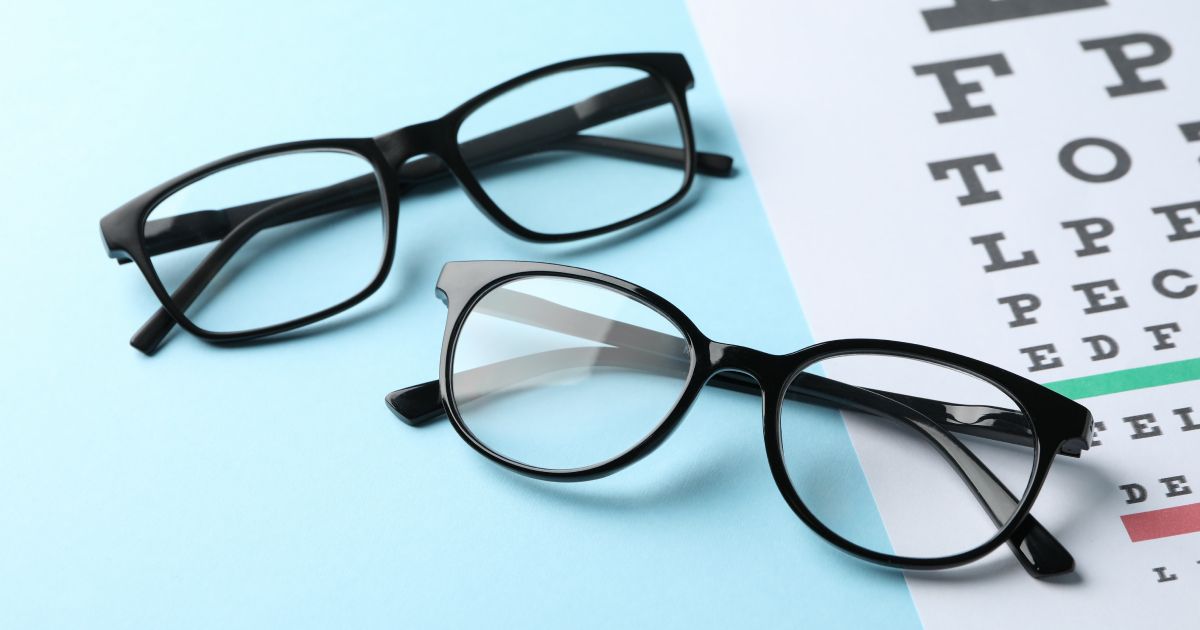Over-the-Counter Readers vs. Prescription Reading Glasses: Which is Right for You?

Read time: 6 minutes
As we age, many of us will inevitably face a decline in our near vision, a condition known as presbyopia. This natural aging process makes it difficult to focus on close objects, leading many to seek out reading glasses. However, with the wide range of options available, particularly over-the-counter (OTC) readers and prescription reading glasses, it can be challenging to know which option is best for your needs.
In this article, we’ll explore the key differences between OTC readers and prescription reading glasses, discuss the benefits of each, and help you determine when it’s appropriate to choose one over the other.
Understanding the Basics
Before diving into the differences and benefits, it’s essential to understand what OTC readers and prescription reading glasses are.
Over-the-Counter Readers
- Availability: OTC readers, also known as non-prescription readers, are readily available at pharmacies, grocery stores, and online.
- Purpose: These glasses are designed to provide magnification for reading and other close-up tasks.
- Strength: They come in a range of pre-set magnification strengths, typically ranging from +1.00 to +4.00 diopters.
- Cost: OTC readers are generally inexpensive, making them an accessible option for many people.
Prescription Reading Glasses
- Availability: Prescription reading glasses require an eye exam and are custom-made by an optometrist or ophthalmologist.
- Purpose: These glasses are designed to correct specific refractive errors and provide tailored vision correction based on individual needs.
- Strength: The strength of prescription glasses is determined by a professional based on an individual’s eye condition.
- Cost: Prescription glasses are usually more expensive due to the custom nature of the lenses and the involvement of a healthcare professional.
Key Differences Between OTC Readers and Prescription Reading Glasses
While both OTC readers and prescription reading glasses serve the purpose of aiding near vision, they differ significantly in several key areas.
Personalization
- OTC Readers: These glasses offer a one-size-fits-all solution. The lenses are identical in each eye and provide the same magnification. They are not tailored to individual visual needs or the specific prescription that may be required for each eye.
- Prescription Glasses: Prescription glasses are highly personalized. They take into account the unique refractive errors of each eye, including conditions like astigmatism, myopia (nearsightedness), hyperopia (farsightedness), and the specific level of presbyopia. This customization ensures that each eye receives the precise correction it needs, providing better visual clarity and comfort.
Lens Quality
- OTC Readers: The lenses in OTC readers are typically made from lower-quality materials, which may result in less sharp vision and more visual distortions. The quality of the lens coatings, such as anti-glare or scratch-resistant coatings, may also be inferior.
- Prescription Glasses: Prescription lenses are made from higher-quality materials and can include a range of enhancements, such as anti-reflective coatings, UV protection, and blue light filtering. This results in clearer vision and more durable glasses, providing better protection for your eyes.
Frame Quality and Fit
- OTC Readers: While OTC readers come in a variety of styles, the frames are usually mass-produced and may not provide the best fit or durability. Poor fit can lead to discomfort, such as pressure points on the nose or behind the ears, and can even affect the effectiveness of the lenses.
- Prescription Glasses: Frames for prescription glasses are often of higher quality and are fitted by a professional to ensure they suit your face shape and size. A proper fit enhances comfort and ensures that the lenses are positioned correctly in front of your eyes, maximizing their effectiveness.
Eye Health Considerations
- OTC Readers: OTC readers are designed for temporary use and are not intended to address underlying eye health issues. They do not correct for astigmatism or other refractive errors that might be present, which can lead to eye strain, headaches, or worsening vision if used improperly.
- Prescription Glasses: By getting a prescription, you undergo a comprehensive eye exam that can detect other eye conditions, such as cataracts, glaucoma, or macular degeneration. This ensures that your vision is corrected appropriately, and any other potential eye health issues are addressed early.
Benefits of OTC Readers & Prescription Glasses
OTC readers do have their advantages, particularly for certain situations and individuals.
- Affordability: OTC readers are much cheaper than prescription glasses, making them a budget-friendly option for those who only need occasional help with near vision.
- Convenience: Since they are readily available at many retail locations, you can easily pick up a pair whenever you need them without waiting for a prescription.
- Variety: With a wide range of styles, colors, and strengths, you can find a pair that suits your taste and needs without much hassle.
- Multiple Pairs: Due to their low cost, it’s feasible to have several pairs of OTC readers in different locations—at home, at work, and in the car—so you always have a pair on hand when you need them.
Despite the convenience and affordability of OTC readers, prescription glasses offer significant benefits that can make them the better choice for many people.
- Customized Vision Correction: Prescription glasses are tailored to your exact visual needs, providing sharper, clearer vision and reducing the risk of eye strain and discomfort.
- Higher Quality Lenses: The superior lens quality and coatings available with prescription glasses offer better protection for your eyes and a longer lifespan for your glasses.
- Detection of Eye Health Issues: Regular eye exams are necessary to obtain prescription glasses, providing an opportunity for early detection and management of other eye health problems.
- Comfort and Fit: Professionally fitted frames ensure that your glasses are comfortable to wear and that the lenses are optimally positioned for your eyes, enhancing the effectiveness of the prescription.
When to Choose One Over The Other
There are specific situations where Over-the-Counter Readers readers may be the best choice for you:
- Mild Presbyopia: If your near vision is only slightly impaired and you don’t have other refractive errors, OTC readers may provide adequate help.
- Temporary Use: If you only need glasses for occasional tasks like reading a menu in a dimly lit restaurant or checking a label, OTC readers can be a convenient solution.
- Backup Pair: Even if you usually wear prescription glasses, having a pair of OTC readers as a backup can be useful in case you forget or misplace your primary glasses.
- Cost Considerations: If budget is a major concern and you don’t have complex vision needs, OTC readers may be the most practical option.
In many cases, prescription glasses are the better choice for ensuring optimal vision and eye health:
- Complex Vision Needs: If you have other refractive errors like astigmatism, or if one eye requires a different correction than the other, prescription glasses are necessary.
- Prolonged Use: For those who need to wear reading glasses for extended periods, prescription glasses will provide more comfort and reduce the risk of eye strain.
- Eye Health Monitoring: If you have a history of eye problems or are at risk for conditions like glaucoma or cataracts, regular eye exams and prescription glasses can help monitor and manage your eye health.
- Desire for High-Quality Vision: If you value having the clearest, most comfortable vision possible, the investment in prescription glasses is well worth it.
The Takeaway
Choosing between over-the-counter readers and prescription reading glasses depends on your individual needs and circumstances. By understanding the differences and benefits of each option, you can make an informed choice that suits your lifestyle and ensures your eyes remain healthy and your vision sharp.
While OTC readers offer convenience and affordability, they are not a one-size-fits-all solution. Prescription glasses, although more expensive, provide personalized vision correction and better overall eye health management. For mild presbyopia or occasional use, OTC readers may suffice. However, for those with more complex vision needs or who wear reading glasses frequently, prescription glasses are often the superior choice. Ultimately, regular eye exams and professional advice are crucial in making the best decision for your eye health and visual clarity.
If you're ready to take the next step towards clearer, more comfortable vision, it's time to explore your options for prescription eyewear. Visit our store today to browse our wide selection of high-quality prescription glasses, perfectly tailored to meet your unique vision needs. Our expert optometrists are here to provide personalized advice and ensure you find the perfect fit.
Don’t settle for less—invest in your eye health and enjoy reading like never before!
Share this blog post on social or with a friend:
The information provided in this article is intended for general knowledge and educational purposes only and should not be construed as medical advice. It is strongly recommended to consult with an eye care professional for personalized recommendations and guidance regarding your individual needs and eye health concerns.
All of Urban Optiks Optometry's blog posts and articles contain information carefully curated from openly sourced materials available in the public domain. We strive to ensure the accuracy and relevance of the information provided. For a comprehensive understanding of our practices and to read our full disclosure statement, please click here.


















